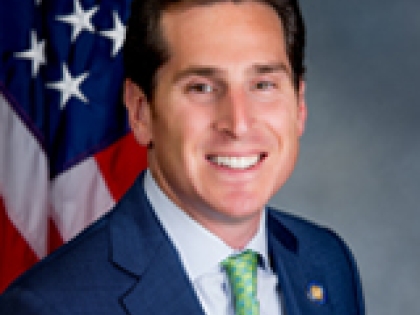
Work to begin spring, summer on South Shore projects
New York's senators announced more than $100 million in flood control emergency disaster grants and funding to reroute sewage to revitalize the Western Bays.
U.S. Sens. Chuck Schumer and Kirsten Gillibrand announced Federal Emergency Management Agency funding for several projects in Long Beach and Reynolds Channel, as well as improvements at Good Samaritan Hospital Medical Center in West Islip.
Work on a three-year project is set to begin April 19 to eventually pump 55 million gallons of treated sewage daily down a 7.3-mile pipeline and reduce 95% of nitrogen from Reynolds Channel.
"These funds will fortify Good Samaritan Hospital and bolster the ecosystem around the Bay Park Wastewater Treatment Plant – defending against storms with stronger infrastructure and nature-based solutions," Schumer said in a statement.
FEMA had promised $20 million to Good Samaritan in 2015 to install emergency electrical generators and to redesign the perimeter floodwall to protect hospital buildings north of Baxter Pavilion from flooding. The hospital’s nursing home was flooded during Superstorm Sandy, and the hospital sustained severe roof and water damage.
Joe Loiacono, senior vice president of planning for the hospital, said work on the nursing home generator and flood control measures should start this summer with the hospital generator added by the end of the year.
"The most important thing for any health care institution is to be resilient during a storm," Loiacono said. "If a hospital doesn’t maintain resilience during a blackout or flooding, we can’t be available in the aftermath of a storm when the public relies on the hospital the most."
The bulk of the funding — $71.8 million — accounts for the initiative to reduce nitrogen in the Western Bays between East Rockaway and Wantagh.
The money will pay for part of a $439 million project to transport sewage from the Bay Park sewage treatment plant through an existing aqueduct under Sunrise Highway to an outfall pipe three miles out through Cedar Creek into the Atlantic Ocean.
The project aims to restore the environment and enhance storm protection through marsh restoration, fishing and recreation in Reynolds Channel.
Long Beach was also awarded $13.5 million in additional funding from FEMA to complete a $33 million critical infrastructure project to construct bulkheading to protect the city’s wastewater treatment plant, its water purification system, the electric substation and the Long Island Rail Road station facing Reynolds Channel.
FEMA previously allocated $20 million, but the city requested additional funding to match bids to build 2,300 feet of steel bulkheading to stabilize the shoreline, prevent erosion, build a pump station at Riverside Boulevard and repave streets.
"In light of our changing climate and the increased severity of storms, continued, substantial investment in resiliency measures is key to the long-term viability of our communities," State Sen. Todd Kaminsky (D-Long Beach) said. "Senators Schumer and Gillibrand’s support in the game-changing solution to build an ocean outfall pipe will revitalize the Western Bays, boosting the local economy, and protecting the Island we love for generations to come."